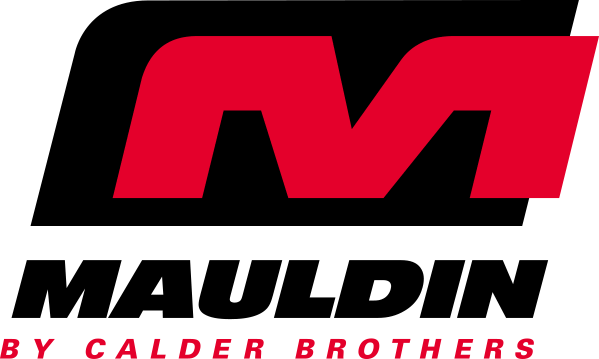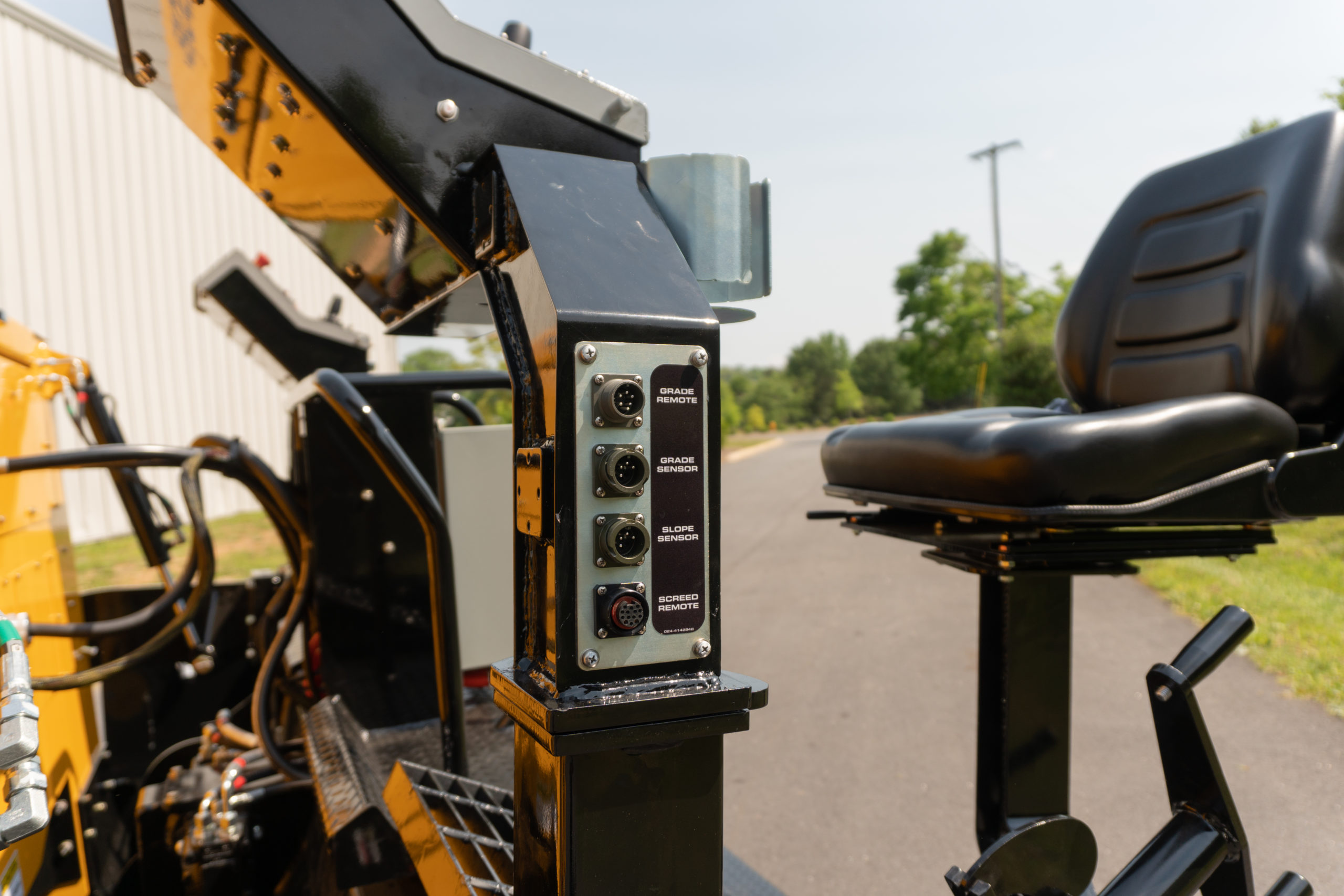AEM’s new report, Benefits of Construction Technologies and their Impact on Society, details how four key innovations are helping construction sites become safer and more productive, while also reducing their environmental footprint.
One of those technologies, machine control, is changing the way earthmoving and paving tasks are completed. Previously unimaginable levels of accuracy and efficiency are being achieved, resulting in jobsites that are safer and more productive, and projects that are completed faster and with less waste.
“Machine control is a technology system that calculates the position of machinery,” said Brad Viernow, OEM director for North America Heavy Construction at Leica Geosystems, a supplier of sensors, software and services for geospatial data intelligence. “To determine precise location, machine control uses measurement data from either satellites (i.e. GNSS) or an onsite surveying instrument called a total station. Then machine control is able to compare that positioning data to a project design.”
Armed with all of that information, machine control is then able to guide and assist the person operating a piece of equipment. It’s pretty simple: Better information leads to better results.
“On average, 52% of all rework globally is caused by poor data and missed communication,” said Viernow. “Sharing up-to-date data via cloud connectivity allows the equipment operator to see all of the design information on the panel in the cab while they are working. Going one step further, machine automation can also come into play. Machine control can actually take some of the work out of the operator’s hands while achieving the desired accuracy even more easily.”
Earthmoving and paving applications lend themselves well to machine control. Equipment operators must work within tight tolerances with respect to things like material placement, grade, cross slope and compaction density. That is why motor graders, dozers, excavators and pavers are among the most common pieces of equipment utilizing machine control today. However, the potential for machine control spans much further.
“There is no piece of machinery within the construction industry that isn’t seeing this type of technology being used in some way,” said Adam Woods, general manager of innovation and product portfolio Strategies at LBX Company, manufacturer of Link-Belt excavation equipment. “Even something like a compactor, which seems like a relatively simple product that just rolls back and forth, will benefit from machine control. Machine control helps determine how much compaction has taken place, and if any further compaction is needed to meet the desired specs. Automation is even allowing machines to do that all on their own. It’s all in the aim of making jobsites more efficient.”
That goes for smaller jobsites and equipment, too. “The utility of something like a compact track loader, paired with the benefits of a technology like grade control, is really a winning combination,” said Sean Mairet, group product manager for Grade Control at John Deere.
“On average, 52% of all rework globally is caused by poor data and missed communication. Sharing up-to-date data via cloud connectivity allows the equipment operator to see all of the design information on the panel in the cab while they are working. Going one step further, machine automation can also come into play. Machine control can actually take some of the work out of the operator’s hands while achieving the desired accuracy even more easily.” — Leica Geosystems’ Brad Viernow
LESS REWORK, LESS WASTE
Everything starts with the accuracy a machine control system helps deliver. Take grade control, for instance. The most advanced system, 3D grade control, deservedly receives a lot of praise. But even a more entry-level 2D system produces meaningful results.
A 2D grade control system helps eliminate inaccurate digging by guiding the operator as they dig. The operator specifies key parameters such as depth and slope in the software. A sensory system on the machine then measures those datapoints as the machine digs, providing visual and/or audible coaching to the operator via a display screen in the cab.
“This level of machine control is based on plane and slope,” Mairet explained. “It’s an ideal solution on projects that don’t require a complex site design, such as sloping terrain away from a house. The operator tells the machine they want to maintain a 2% slope, for example, and the 2D grade control system controls the blade or bucket to achieve that. From this standpoint, even a 2D system can help save a lot of time and material by not over-cutting or over-digging.”
Modern 3D grade management takes accuracy to another level. In fact, certain systems can help equipment operators achieve accuracy up to a millimeter. 3D systems are also more sophisticated. 3D systems tie into position information and a site design to pinpoint where a machine is located at all times. The position information is provided by either satellites (i.e. GNSS) or an onsite surveying instrument called a total station. Each has its own advantages. Regardless, the precision accuracy of 3D grade control can lead to even greater gains in efficiency and resource optimization.
Case in point, industry estimates suggest that construction projects see a 10-20% reduction in material use when grade control is deployed. That means the amount of asphalt and concrete saved on public road construction projects each year is enough to pave a two-lane highway from Chicago to Phoenix. That has a direct financial implication for not only construction companies, but also everyday citizens. By increasing accuracy and reducing waste, taxpayers saved approximately $3.6 billion in material costs on public road construction projects in 2022 alone.
Grade control can also have a positive impact on project scheduling. Time is money on construction projects. When operating equipment with machine control, Woods has seen some construction companies improve productivity by 30-50%.
“Think about a project like an irrigation canal,” Woods related. “If that canal is 1,000-feet-long with a 0.3% slope, that slope isn’t changing much from spot to spot. Machine control is able to constantly check that slope so it’s accurate. That’s where productivity can really climb, because the operator isn’t having to repeatedly stop and check grade. It’s almost unheard of anymore, but some contractors are even finishing projects ahead of schedule when using this technology.”
“We’ve found that 35% of working time on a jobsite is spent on non-value-adding activities,” Viernow added. “Additionally, rework can create an average of 10% schedule growth. Machine control helps reduce a lot of this waste throughout the construction process. By simply moving the right dirt the first time, you can really reduce a lot of waste on a jobsite.”
“There is no piece of machinery within the construction industry that isn’t seeing this type of technology being used in some way,” LBX Company Adam Woods. “Even something like a compactor, which seems like a relatively simple product that just rolls back and forth, will benefit from machine control. Machine control helps determine how much compaction has taken place, and if any further compaction is needed to meet the desired specs. Automation is even allowing machines to do that all on their own. It’s all in the aim of making jobsites more efficient.” — LBX Company’s Adam Woods
TAKING CONTROL OF SAFETY
Machine control technologies like grade control can also help reduce safety-related incidents on a jobsite.
“Without technology like this, you need surveyors, civil engineers and other people on a jobsite to be constantly checking grade,” Woods said. “They are constantly walking up to and around the machine. They are oftentimes working within a trench. With grade control technology, you reduce the need for these people to place themselves in these potentially unsafe environments.”
There are also safety-specific machine control features that are helping enhance jobsites. A camera system is the first thing that comes to mind. Cameras give equipment operators enhanced visibility all around a machine, oftentimes calling attention to people and objects that are getting dangerously close to that machine.
As important as that type of operator guidance system is, machine control has the ability to do much more. Technology is capable of actually stopping a machine when a potential collision is detected. Additionally, Viernow said 3D avoidance zones can be created by leveraging another key construction technology, geofencing.
“Let’s say a person is operating an excavator in an area with a powerline right above them,” Viernow related. “Through location-based geofencing, the operator could set up an automatic stop so the excavator arm couldn’t extend beyond a certain point.” That makes things much safer and less stressful for the operator, which is one of the core objectives of machine control.
REFILLING THE SKILLED OPERATOR PIPELINE
In addition to making equipment safer and more productive, machine control also makes equipment easier to operate. By improving accuracy and taking over certain functions, machine control can help operators become proficient in less time and fatigued far less often.
“It isn’t easy to hop into a piece of construction equipment and start doing what these operators are asked to do,” Mairet said. “Technology like grade control can help operators get comfortable and productive a lot faster. Even people who’ve been operating equipment for many years will benefit from technology that lightens their workload. That leads to happier and more productive operators.”
“With machine guidance, you can take a proficient operator and make them distinguished,” Woods added. “With machine control, a novice operator could learn to cut grade within a day or so of using the equipment. Without this type of technology, the necessary training could take months, if not years.”
To that point, machine control is one solution to the growing skilled labor shortage the construction industry is facing. Machine control allows equipment operators to rely on real-time data and semiautonomous operation, as opposed to intuition and decades of skill refinement.
“Machine control technologies are really modernizing the workflow,” Mairet said. “Good operators and surveyors have always been able to maintain grade. Machine control is just making that process much safer and more efficient. Machine control is really a modern approach to how we shape our world.”
WANT TO LEARN MORE?
The Association of Equipment Manufacturers (AEM) released a study outlining how construction equipment technologies have advanced the construction industry and benefited a wide range of stakeholders, from contractors, to owners, to society as a whole.
The Benefits of Construction Equipment Technologies and Their Impact on Society details four construction equipment technologies that play critical roles in advancing the industry, and thereby enabling benefits to productivity and performance, planet and environment, as well as people and safety. For more information, visit aem.org/insights.
Machine telematics was discussed in an earlier article. Machine telematics allows for remote equipment monitoring to help improve jobsite safety and security, fleet management, equipment maintenance, equipment operator behavior, fuel consumption and more.
Watch for future articles that will discuss two additional construction equipment advances, engines and drivetrains, as well as digital control systems.
Subscribe to the AEM Industry Advisor for more perspectives from AEM members.




